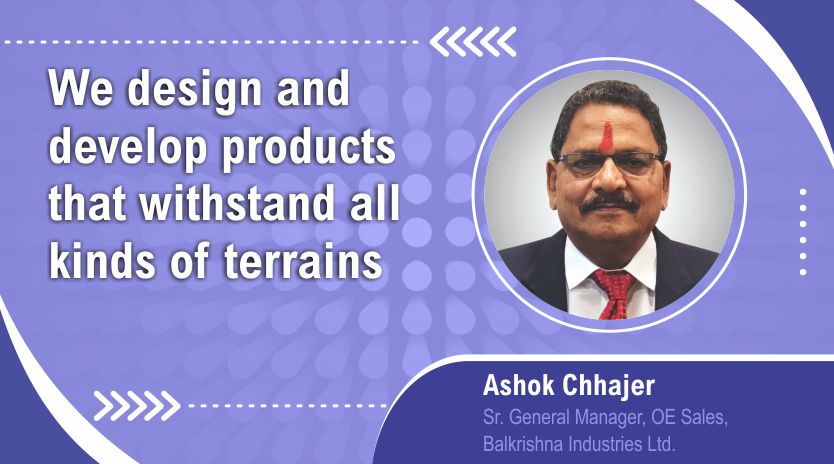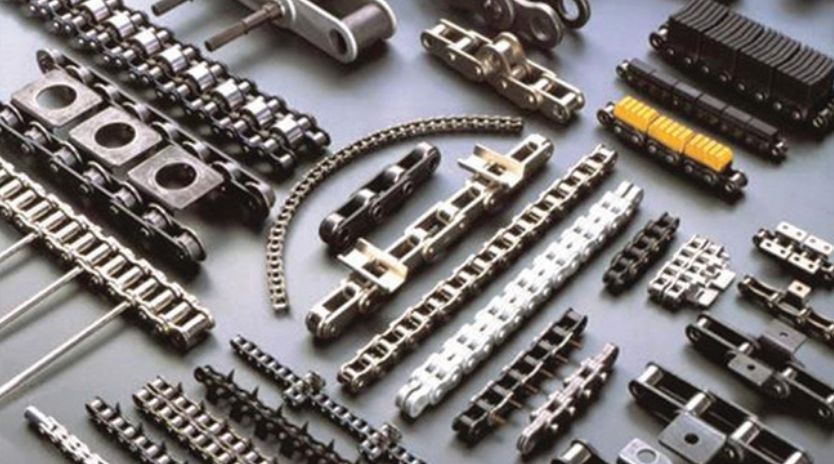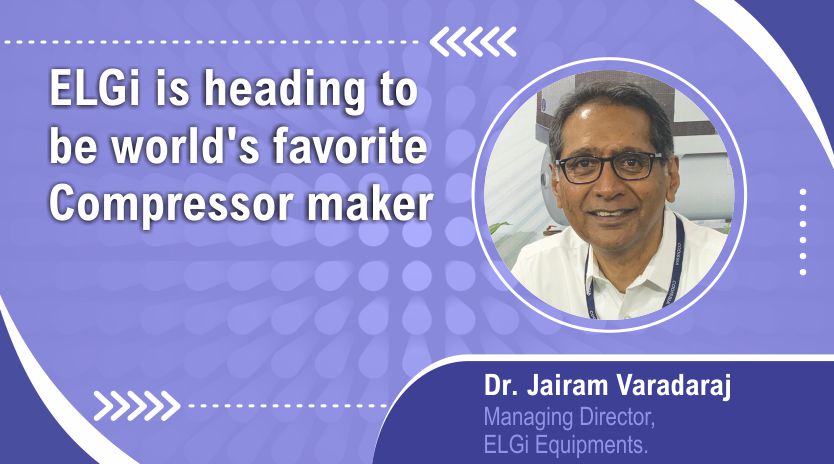Transforming industries through effective energy management
May 10, 2019 2:45 pm
An analysis on how important it is to have efficient energy management in industrial plants.
Energy management can be best defined as the conservation, control and monitoring of energy in a business or company. Here, in this article, we would be discussing the various technologies and tools used in industries and facilities for effective energy management.
Tools for effective energy management
Effective energy management is more important than ever before and various management tools are put into use for the same.
Mukund Patil, Head – Process and Factory Automation, India, B&R Industrial Automation Pvt Ltd, describes that goals of an energy management system are regular measurement and recording of the most important energy consumers; monitoring of energy management programmes; verification of adherence to relevant legal regulations and obligations at regular intervals; investigation of any deviation from expected energy usage during the current period, as well as full documentation of the deviation and the identified cause.
“Such energy management solutions help facilities determine the correlation between energy costs and manufacturing costs. Using load curve and peak load analysis helps prevent unplanned shutdowns,” says Patil. “These systems are capable of displaying energy reports and diagrams for a machine, subsystem, main system or company with regard to batch or cost unit. An underlying PDCA (Plan-Do-Check-Act) cycle reflects a continuous four-phase process for improvement.”
He further suggests that an energy management solution, if coupled with condition monitoring and data acquisition, helps the facilities to not only reduce costs, but also benefit from an integrated solution.
Importance of energy audit
Energy audit is a timely study, which acquires knowledge of existing energy consumption of a factory or a facility. Patil says that this study helps determine, quantify and report the potential of energy savings cost-effectively.
“Such a study is instrumental in optimising the energy consumption from different sources and preparing a strategy for reducing the costs incurred due to energy consumption. With an effective energy audit, it is possible for identify potential savings in the facility. It serves as one of the many methods to identify opportunities for improvement,” says Patil.
“Such energy audits are definitely of prime importance for any industrial or commercial establishment who are looking at identifying existing energy saving potential, resulting in a decrease in energy consumption, greenhouse gas emissions and thus reducing the cost associated to that consumption,” he adds.
However, Meenu Singhal, Vice President, Industry Business, Schneider Electric India, says that industrial energy efficiency is a key segment in the transition of the economy towards expanded sustainability.
“An industrial energy audit is a procedure that measures energy usage patterns, equipment efficiency, and overall building efficiency so as to come up with effective energy efficiency measures. It enables industries to know more about ways that energy and fuel are utilised in any industry,” he adds.
Further, it identifies areas where despite waste production there is also scope for improvement. The key objective is to ensure the minimum waste of energy or lowering the operation cost. All in all, the result of a successful energy audit will ultimately lead to decreased energy consumption, reduced raw material usage, and increased quality of the end product. Sujat Faxwala, Director, Elconn Energy Systems India Pvt Ltd, says that the integral part of analysis of energy saving potentials for any client is through an energy audit. “Through this, the viability of implementing any energy saving system and the potentials of optimum power savings can be derived for the proposed site. Hence energy audit is a basic tool and an important step in relevance to industrial, commercial or any other establishment,” explains Faxwala.
He further explains that energy audit/energy surveys involve a lot of rigorous collection of all electrical parameters for the site, analysis, gauging, scrutiny, observance, and thorough study using a lot of tools and sophisticated equipment. The data analysed will finally provide clarity on the proposed potential of energy saving that can be achieved for the client. It will also derive the capacity of energy saving system, which should be implemented at site.
He mentions that the major advantage in India is that there is huge opportunity for energy savings, as many commercial operations and industries have been using obsolete technologies and equipment. “With the vast years of experience we would like to recommend implementation of our ATW Zigzag technology, thereby achieving maximum financial benefits for the projects,” he adds.
Dedicated technologies for energy savings
With the convergence of Industry 4.0, the Industrial Internet of Things (IIoT), or Smart Manufacturing, the power of technology is being felt throughout the industrial world and fundamentally changing value chains and production methods, believes Meenu Singhal.
“The overall energy consumption account for up to 10 per cent of total production costs, and this figure is as much as 40 per cent of manufacturing costs in various energy-intensive industries. In most industrial plants, energy expenditures are one of the highest operating expenses. As such, increasing energy efficiency by reducing consumption can help organisation to not only reduce operational costs, but also sustain their competitiveness in the market,” he adds.
To meet such challenges, Singhal suggests that industrial companies need to fully embrace the capabilities of new IoT connected technologies. “This is where Schneider Electric’s EcoStruxure for machines, power and plants comes in. Uniting the world of automation, connectivity, and software, EcoStruxure enables you to drive the evolution of your business rather than just plan for it. It is not a product, but rather an approach that creates intelligent energy management systems. Businesses can now anticipate better results and improvements in operations through energy visibility and real-time control of any energy usage,” he says.
However, Sujat Faxwala recommends Elconn’s ATW Zigzag Technology, a unique transformer for supply and saving of energy solutions to industrial plants and other sectors. He claims that no other technology can match its savings and reliability records.
Speaking about the working of ATW-ZIGZAG technology, Faxwala says that the technology helps eliminate harmonics, unbalance and reactive power by offsetting the zero-phase current in each phase.
Citing the diagram given below, he explains that the first coil is wound around the first and second limbs, the second coil around the second and third limbs, and the third coil around the third and first limbs. In each phase, these coils should be in the opposite direction from each other before connecting to the neutral wire. When the coils are wound in the opposite direction with the same magnetic flux in each phase, the zero-phase current occurring during the operation of loads is offset in each phase and automatically drops on the neutral wire. Then it leads to eliminating harmonics and unbalanced current and decreasing the phase difference between the voltage and current.
An alternating current takes the form of sine wave, but as there is more phase unbalance and harmonics (THD), the basic sine wave form gets distorted, resulting in an increase in resistance. Such an increase in the resistance causes more power consumption to keep the output constant. The frequent occurrence of unbalance in phase load, impulses and harmonics results in an increase in current consumption, power consumption, and higher resistance.
Industrial energy audit enables industries to know more about ways that energy and fuel are utilised in any industry
Meenu Singhal, Vice President, Industry Business, Schneider Electric India
Energy management solutions help facilities determine the correlation between energy costs and manufacturing costs
Mukund Patil, Head – Process and Factory Automation, India, B&R Industrial Automation Pvt Ltd
The major advantage in India is that there is huge opportunity for energy savings, as many industries have been using obsolete technologies and equipment
Sujat Faxwala, Director, Elconn Energy Systems India Pvt Ltd
Cookie Consent
We use cookies to personalize your experience. By continuing to visit this website you agree to our Terms & Conditions, Privacy Policy and Cookie Policy.

















 English
English Hindi
Hindi